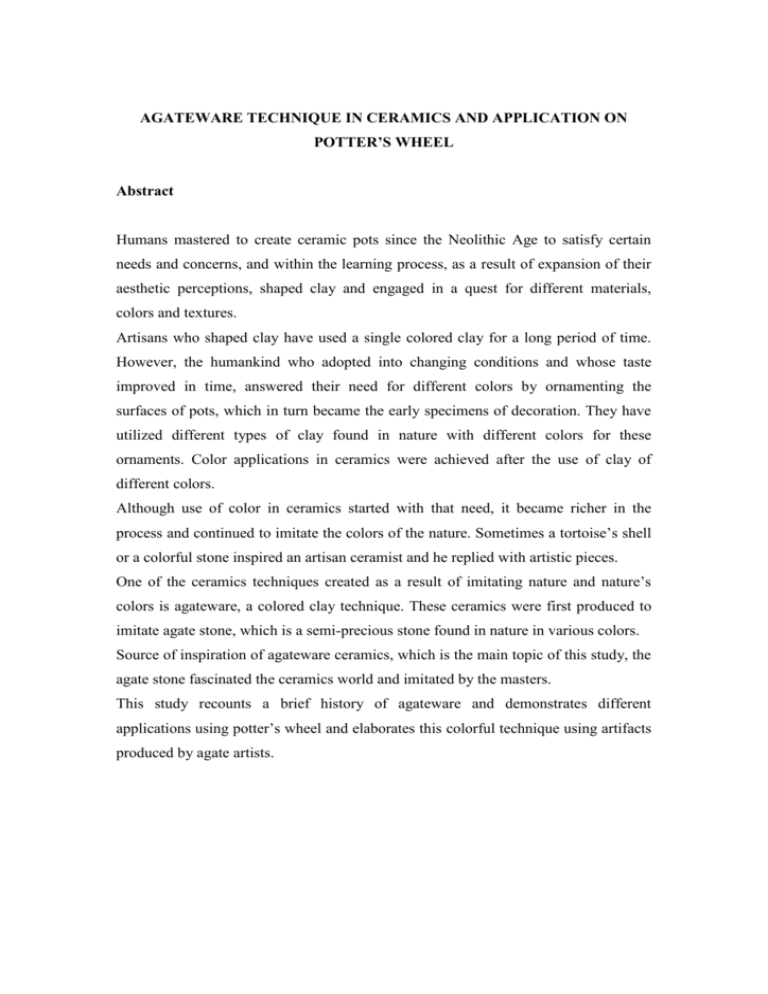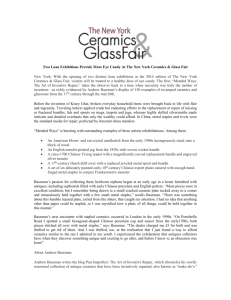AGATEWARE TECHNIQUE IN CERAMICS AND APPLICATION ON
advertisement

AGATEWARE TECHNIQUE IN CERAMICS AND APPLICATION ON POTTER’S WHEEL Abstract Humans mastered to create ceramic pots since the Neolithic Age to satisfy certain needs and concerns, and within the learning process, as a result of expansion of their aesthetic perceptions, shaped clay and engaged in a quest for different materials, colors and textures. Artisans who shaped clay have used a single colored clay for a long period of time. However, the humankind who adopted into changing conditions and whose taste improved in time, answered their need for different colors by ornamenting the surfaces of pots, which in turn became the early specimens of decoration. They have utilized different types of clay found in nature with different colors for these ornaments. Color applications in ceramics were achieved after the use of clay of different colors. Although use of color in ceramics started with that need, it became richer in the process and continued to imitate the colors of the nature. Sometimes a tortoise’s shell or a colorful stone inspired an artisan ceramist and he replied with artistic pieces. One of the ceramics techniques created as a result of imitating nature and nature’s colors is agateware, a colored clay technique. These ceramics were first produced to imitate agate stone, which is a semi-precious stone found in nature in various colors. Source of inspiration of agateware ceramics, which is the main topic of this study, the agate stone fascinated the ceramics world and imitated by the masters. This study recounts a brief history of agateware and demonstrates different applications using potter’s wheel and elaborates this colorful technique using artifacts produced by agate artists.





















